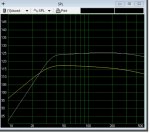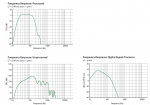The port in a box acts as a second radiator, and a radiator with an amount of gain. They are a straightforward way of reducing the excursion of a driver, while providing additional acoustic output, at the bottom end of the passband where drivers need the most help. For a long time the performance of Helmholtz resonators (i.e. ports) was linear enough that they supplemented the output of drivers without too much fuss. The case for ports is pretty easy to make with five minutes fiddling around with Theile Small parameters.
Now the drivers are displacing enough air that ports are starting to be the long pole in the tent, performance wise. The need to be bigger, and more aerodynamic, to continue to keep pace. The challenge to this is that the mechanics of a fluid exiting and opening and entering the same opening are totally different. So ports need to be a compromise between helping air enter the port and exit the port.
The alternative is to make folded horns. In a horn the pressures are high near the throat, but the volume velocity is low, so this tends to help minimize the effects of turbulence in the air around the folds, at least near the throat. As one nears the mouth the pressure becomes lower and the volume velocity grows higher. Folded horns, too, eventually end up with problems of air turbulence in the vicinity of their bends.
One could argue that a sealed box is immune to these effects, but then you've got the nonlinearities of a loudspeaker that needs to move through more displacement for the same output. Also, air itself starts to experience nonlinear compliance behavior at high volumes, so even the air "spring" behind the driver in a sealed box is not as linear as we would hope. Sealed boxes also lack a way to dissipate the substantial heat generated by the driver's motor structure, at least in the conventional "cone out" mounting configuration.
There are always compromises in play, success lies in the skill of navigating them.
 Wasn't over fond of them, but they worked. I also have a few Bag End Infra subs around, which are a sealed design. But the ported subs are the ones that go out most often.
Wasn't over fond of them, but they worked. I also have a few Bag End Infra subs around, which are a sealed design. But the ported subs are the ones that go out most often.






